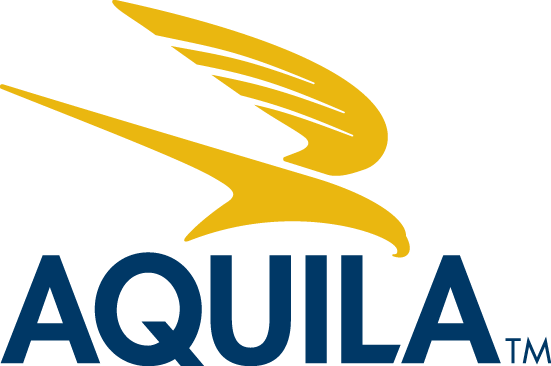Are you looking to invest in commercial real estate? Understanding the language of the industry is crucial. This article provides an overview of essential terms and concepts, covering financing, valuation, CRE investment strategies, and various investment vehicles.
By familiarizing yourself with these terms, you’ll be better equipped to make informed commercial real estate investment decisions, evaluate risks, and communicate effectively with industry professionals. Whether you’re a seasoned investor or just starting out, mastering the language of commercial real estate is a crucial step toward achieving your investment goals.
Commercial Real Estate Investment Terms You Need to Know
Amortization
This refers to the process of paying off a debt (often from a loan) over time through regular payments. An amortization schedule details the proportional amounts of principal and interest in each payment.
Balloon Payment
The final payment of the balance due on a partially amortized loan.
Basis
The total amount paid for a property, including equity capital and the amount of debt incurred.
Capitalization Rate
Is the rate of return on a real estate investment property based on the income that the property is expected to generate and is expressed as net operating income divided by current market value. Also referred to as “Cap Rate.”
Cash Flow
The net cash received in any period, taking into account net operating income, debt service, capital expenses, loan proceeds, sale revenues, and any other sources and uses of cash.
Depreciation
The loss of utility and value of a property (tax benefit).
Internal Rate Of Return (IRR)
Is the percentage rate earned on each dollar invested for each period it is invested. It represents a way of measuring the return on an investment over the entire investment period.
Yield
The income return on an investment, such as the rental income from a property.
Loan-To-Value Ratio
The amount of money borrowed in relation to the total market value of a property. Expressed as the loan amount divided by the property value.
Debt Coverage Ratio
Ratio of net operating income to annual debt service. Expressed as net operating income divided by annual debt service.
Market Value
The most probable price that a property would bring in a competitive and open market under fair sale conditions. Market value also refers to an estimate of this price.
Net Present Value
The sum of all future cash flows discounted to present value and netted against the initial investment.
Core
Lower Risk/Lower Return. The properties utilize lower leverage and tend to generate predictable cash flow. They are typically positioned in strong tier-1 markets and are easily financed. Lower probability of sustaining a loss of investment on core properties, but this also means the potential for outsized returns is also on the lower end.
Core-Plus
Moderate Risk/Moderate Return. Similar to the core properties, core-plus properties generally have few to no issues with securing financing and are well-located with a strong tenant base. The difference is found in a limited elevation of risk and potential for increased NOI, like upcoming lease rollover or light value-add opportunity.
Value Add
Medium Risk/Medium-to-High Return. This type of investment is characterized by the opportunity to improve the investment in some way. Typically improving the property physically or increasing the operational efficiency will improve the cash flow and returns.
Development
Higher Risk/Higher Return. What this entails depends on the specific property, but ranges from ground-up development to redevelopment of existing structures. The potential for outsized returns here is very high, but accordingly, the risk is highest as well.
Investment Vehicles
- Limited Partnership
- REITs
- Private Equity Funds
- TIC Investment
- 1031 Exchange
Limited Partnership (LP)
A Limited partnership must have at least one GP and a least one LP (limited liability corporations, LLCs treated like LPs)
- Passive Investor
- No involvement in operations
- No liability
- Typical waterfall structure
- Limited Partners get preferential return on equity and then a profit split with the sponsor.
- Potential Obligation for future capital calls
Private Equity Funds
- An asset class consisting of equity and debt investments in the different property markets allowing multiple investors to pool their funds
- Investor makes monetary commitment over a period of time
- Commitment may be called over time or upfront
- Generally asset management fee and possible disposition fees involved
- Provides diversification in product types and geographical areas
- Terms of funds vary, but usually 5 to 10 years
- Many require Accredited Investors (Investors that are financially sophisticated per SEC)
TIC Investments
- Investment by the taxpayer in real estate which is co-owned with other investors
- Since the taxpayer holds the deed to real estate as a tenant in common, the investment qualifies under the like-kind rules of 1031
- Typically made in projects such as apartment houses, shopping centers, office buildings, etc.
- Can provide a secure investment with a predictable rate of return on their investment
- Illiquid
1031 Exchange
- Allows investors to sell a property, to reinvest the proceeds in a new property and to defer all capital gain taxes.
- As the example below demonstrates, exchanges protect investors from capital gain taxes as well as facilitate significant portfolio growth and increased return on investment.
- Example:
- An investor has a $200,000 capital gain and incurs a tax liability of approximately $70,000 in combined taxes (depreciation recapture, federal and state capital gain taxes) when the property is sold. Only $130,000 remains to reinvest in another property.
- Assuming a 25% down payment and a 75% loan-to-value ratio, the seller would only be able to purchase a
- $520,000 new property.
- If the same investor chose to exchange, however, he or she would be able to reinvest the entire $200,000 of equity in the purchase of $800,000 in real estate, assuming the same down payment and loan-to-value ratios.
REITs
- A REIT is a type of security that invests in real estate through property or mortgages and often trades on major exchanges like a stock
- REITs provide investors with an extremely liquid stake in real estate
- They receive special tax considerations and typically offer high dividend yields. Must pay 90% of taxable income out as SH dividends
- It is an investment vehicle for real estate that is comparable to a mutual fund, allowing both small and large investors to acquire ownership of commercial properties such as apartment complexes, hospitals, office buildings, timberland, warehouses, hotels, and shopping malls
Keys To Identifying & Acquiring Attractive Assets
| Physical Characteristics | Underwriting | Deal Characteristics |
|
|
|
Advantages Of Investing In Commercial Real Estate
- Provides investment diversification
- Can produce high investor yields
- Security of a hard asset that you can see and touch
- Provides some of the best tax advantages
- Ability to borrow a significant amount of the price of the acquisition. Each monthly mortgage payment results in paying down the loan (tenant rent helps pay off the loan)
Risks Associated With Investing In Commercial Real Estate
- Leverage increases risk (highly levered property – if rents decrease – Big Problem)
- Much more illiquid than other asset classes
- Property values can be influenced greatly by real estate cycles + macroeconomic cycles
Conclusion
If you’re looking to invest in commercial real estate, it’s important to speak the language. We’ve covered the basics of the lingo that you need to know.
Understanding these terms will help you make smarter investment decisions, accurately gauge risk, and increase your chances of success. Whether you’re an old pro or just starting out, mastering the language of commercial real estate is a crucial step toward achieving your investment goals.
Now that you’re up to speed, the AQUILA Commercial Real Estate Investment Team is ready to put your new knowledge into practice. Reach out to our brokers today to determine what commercial real estate investment type best fits your interests and to get an inside look at what options are on the market today.














